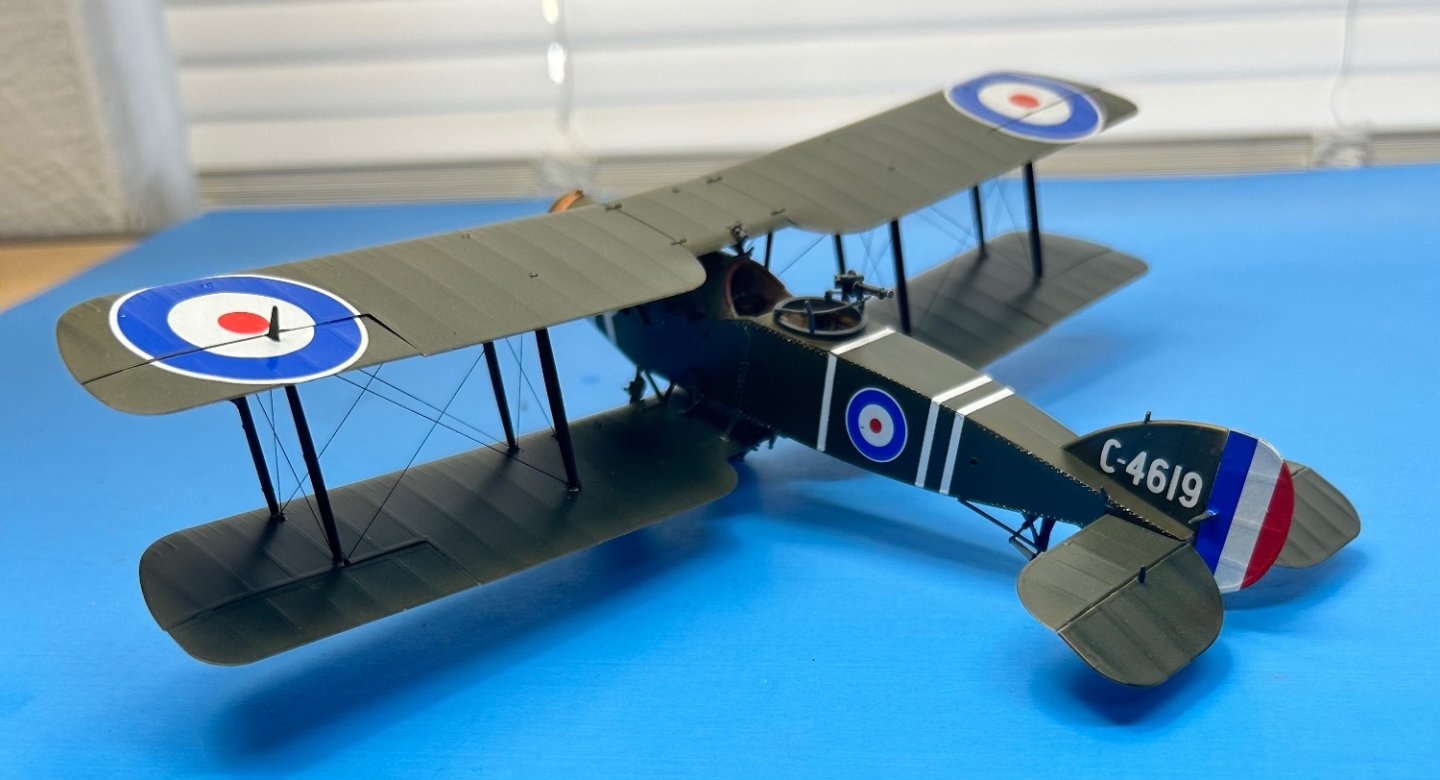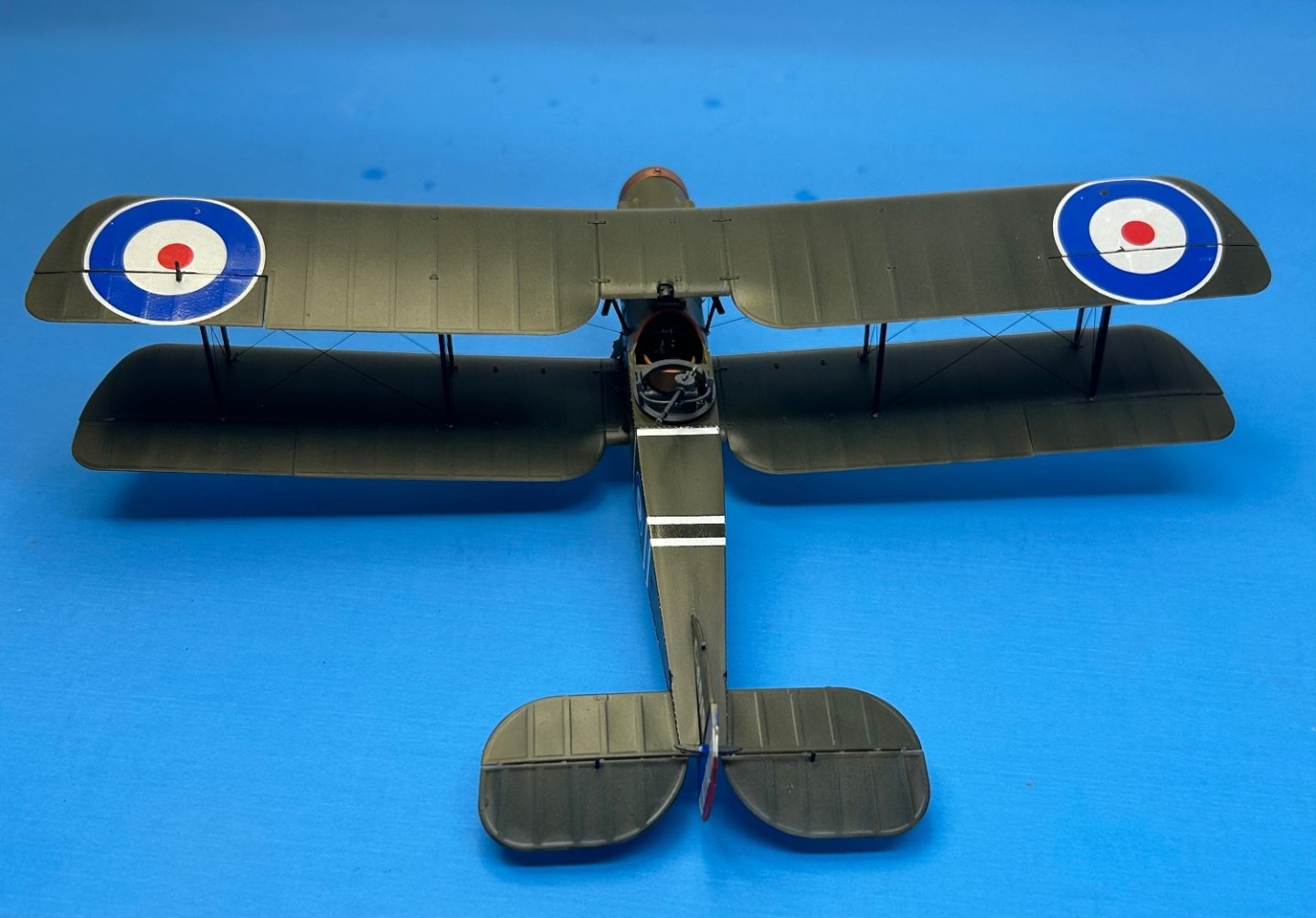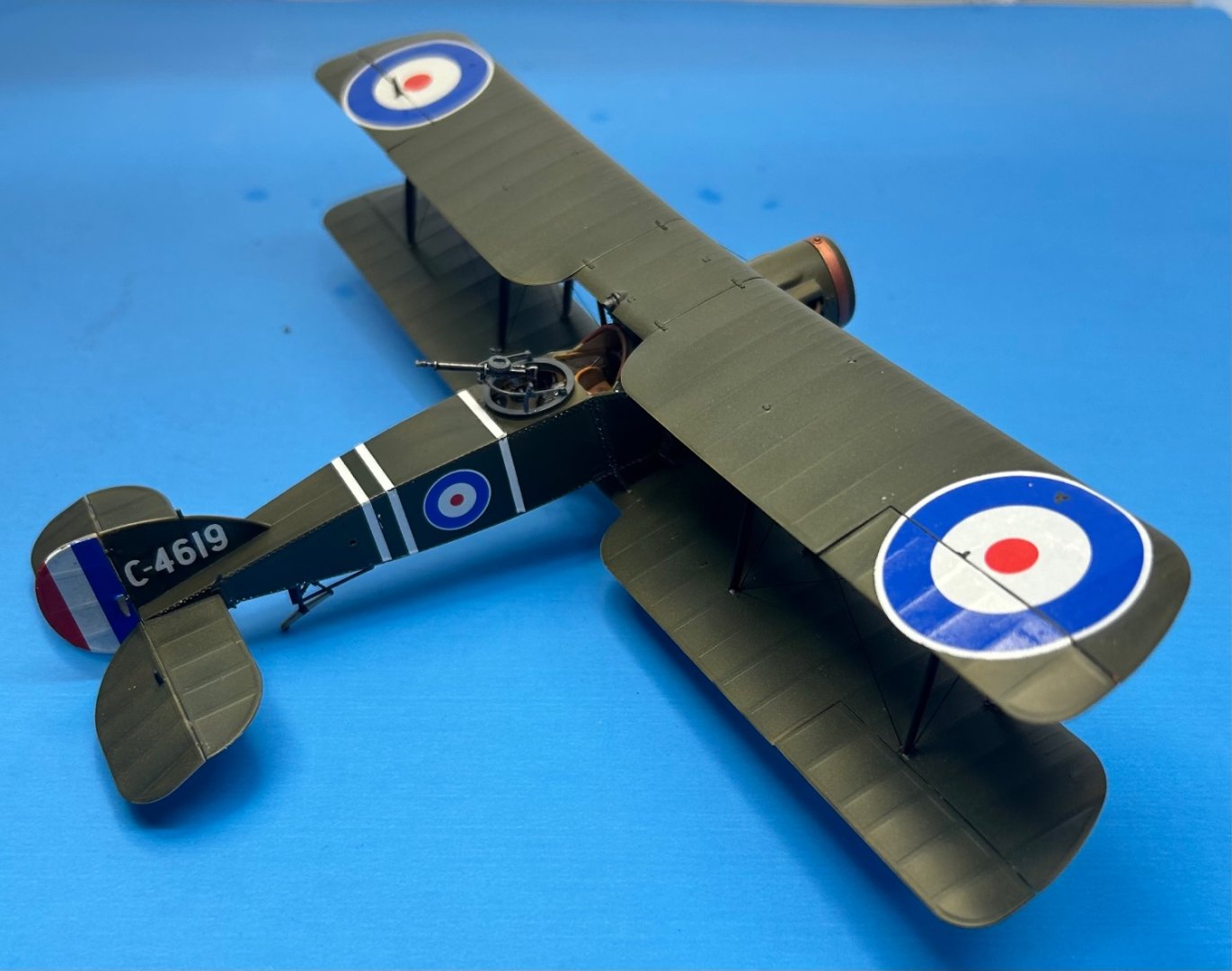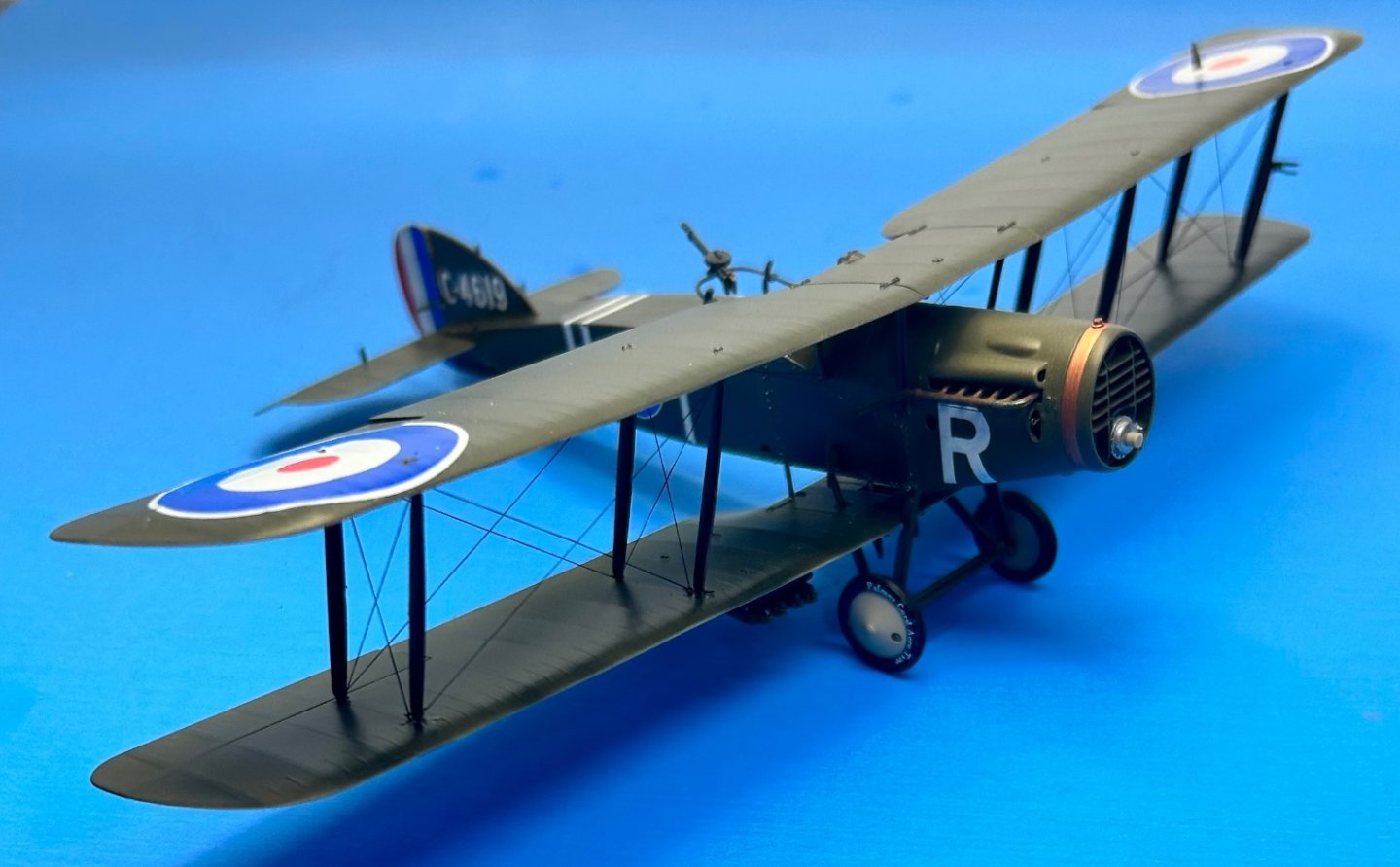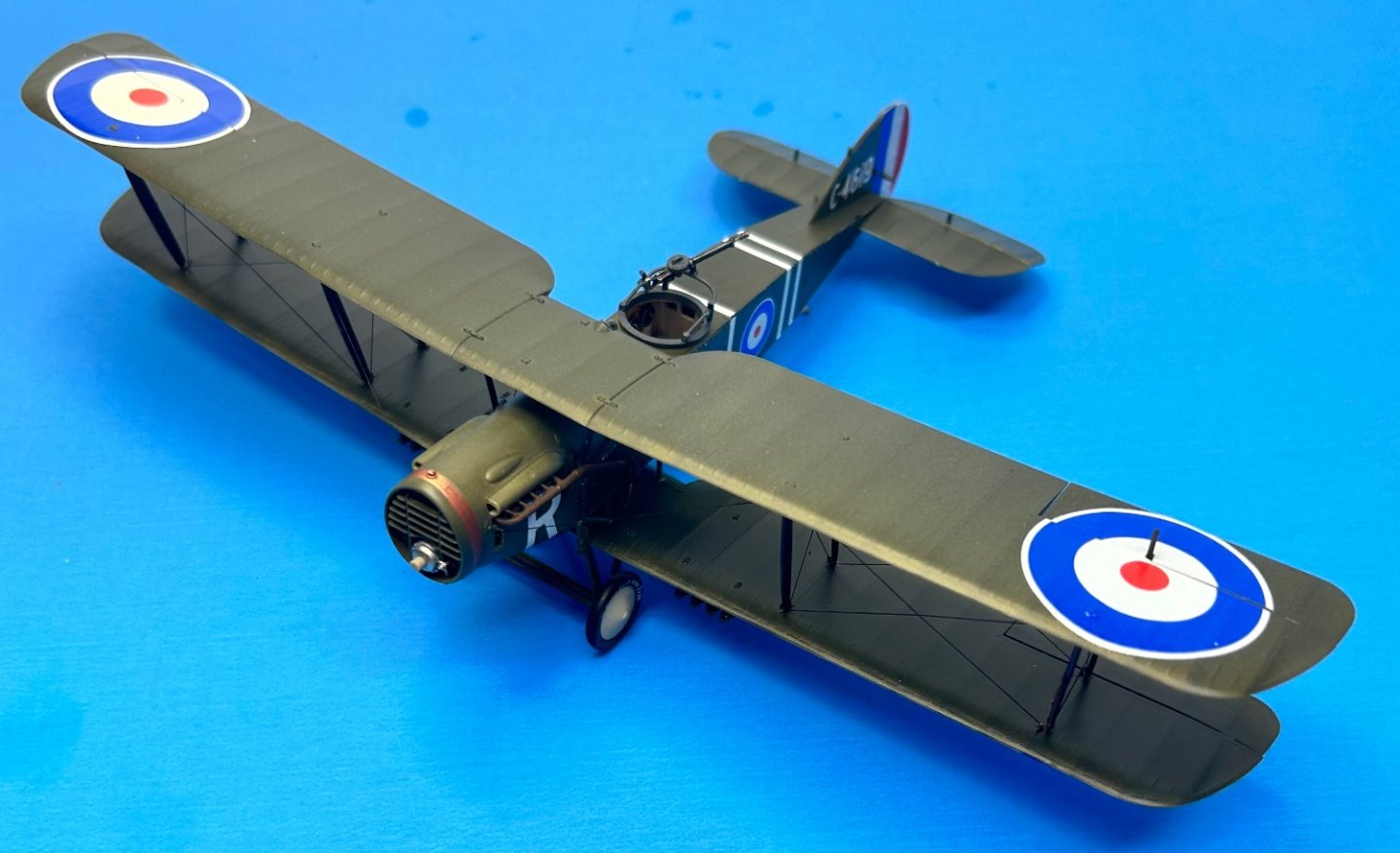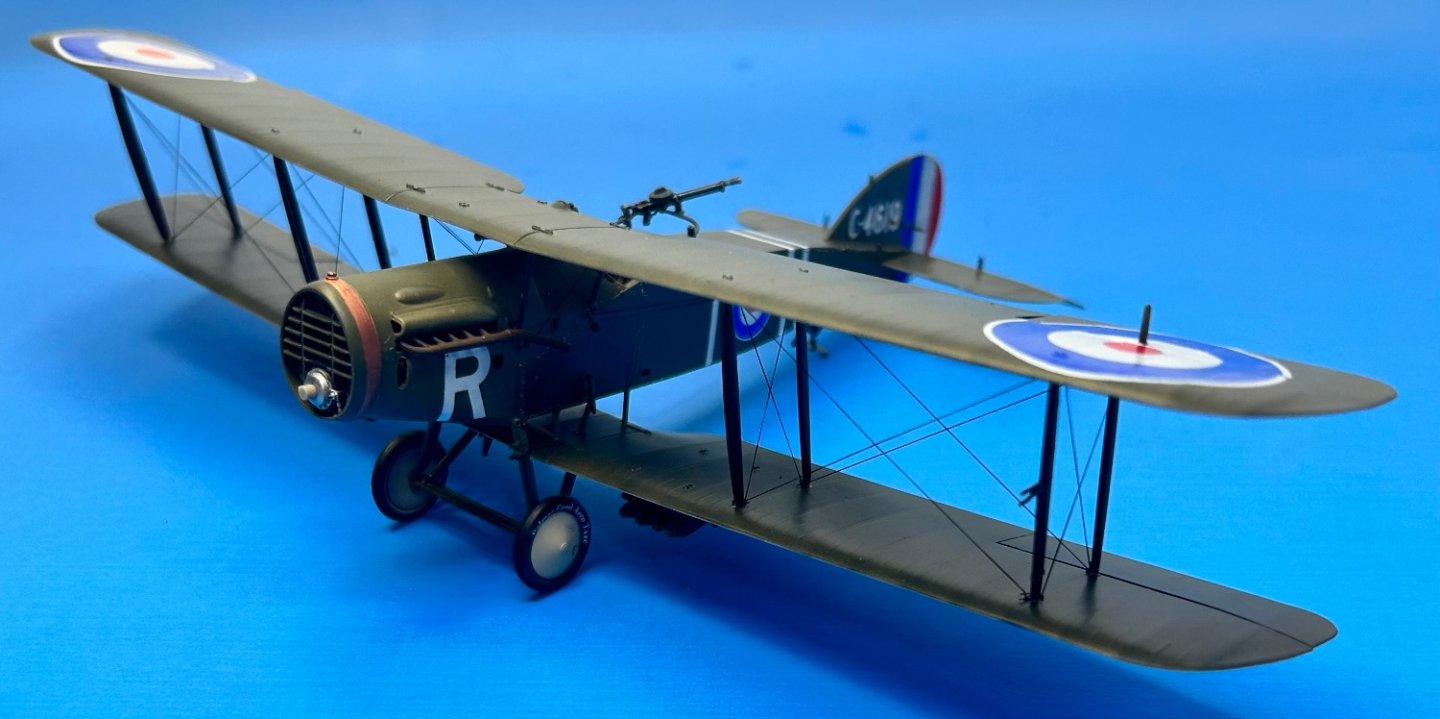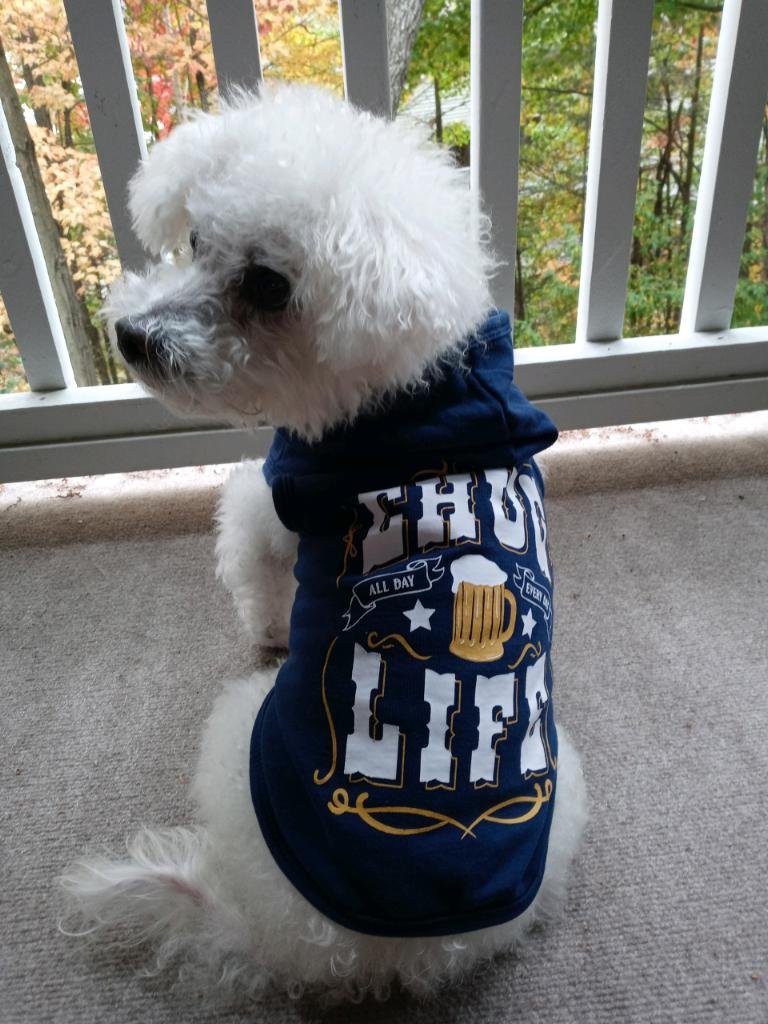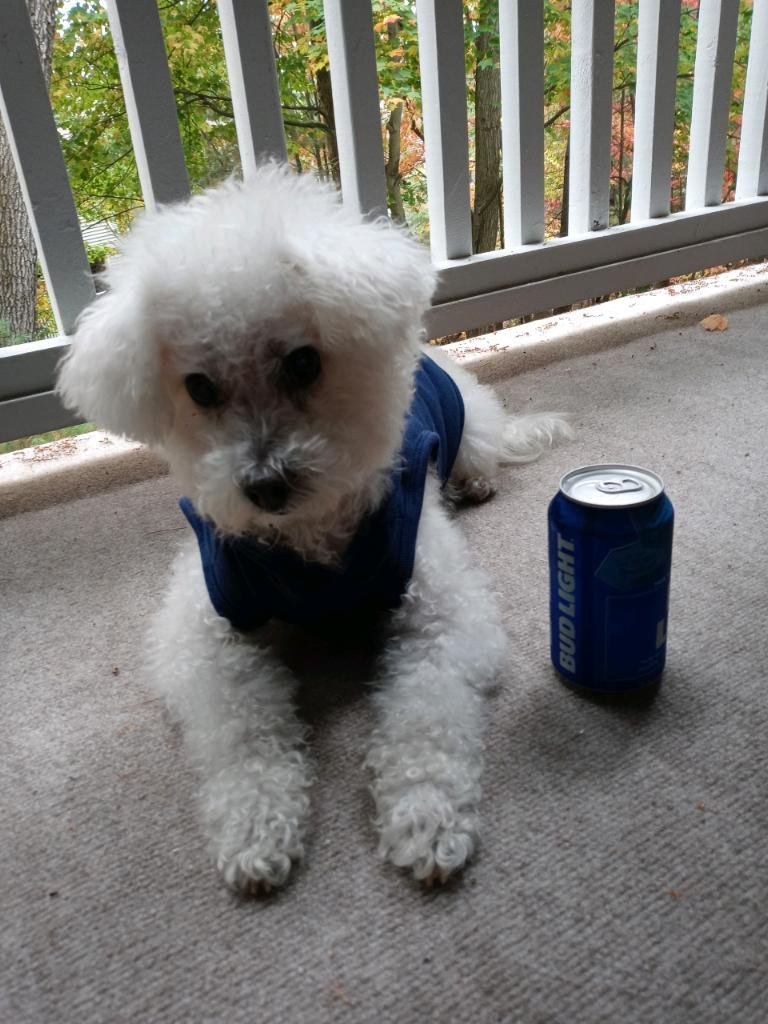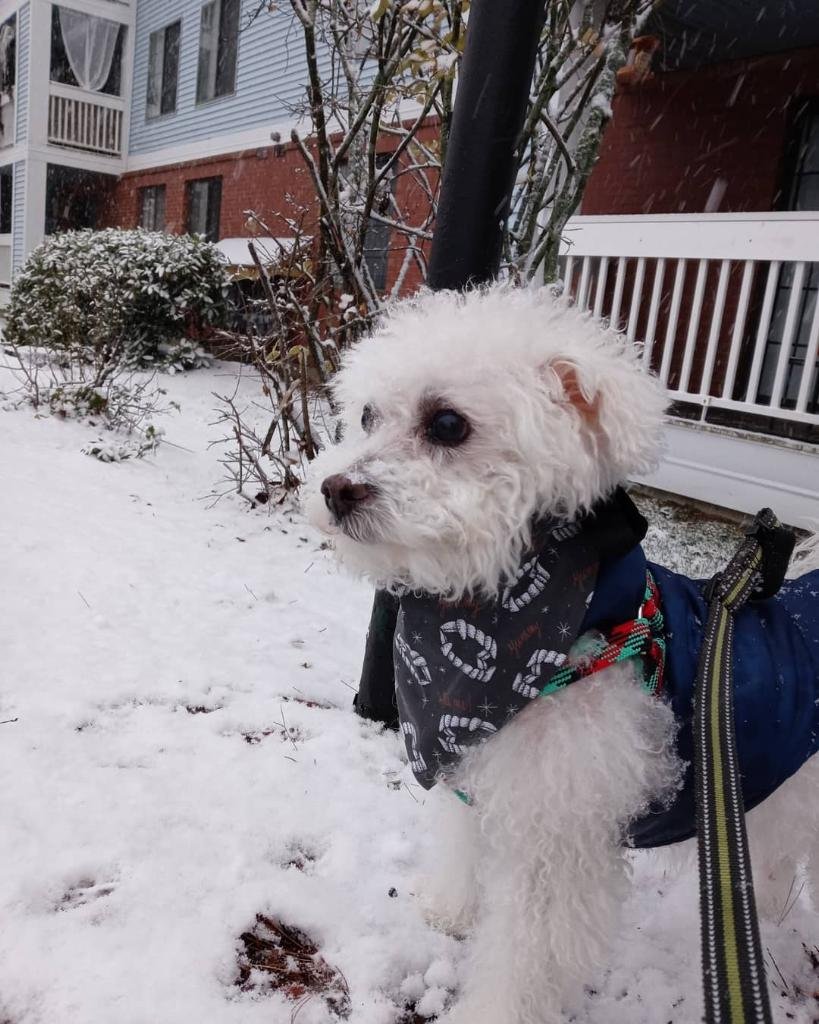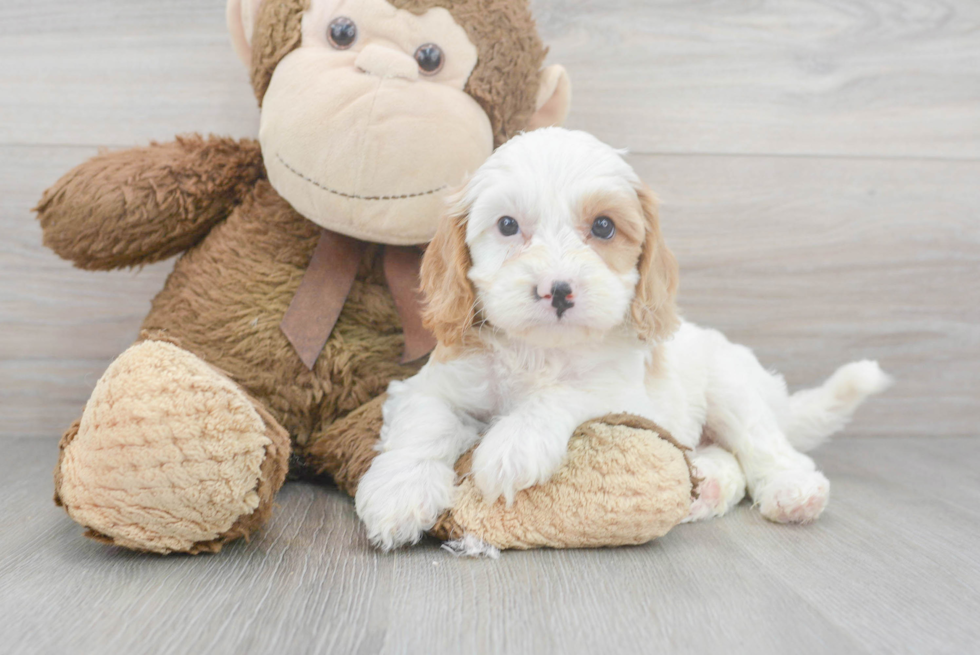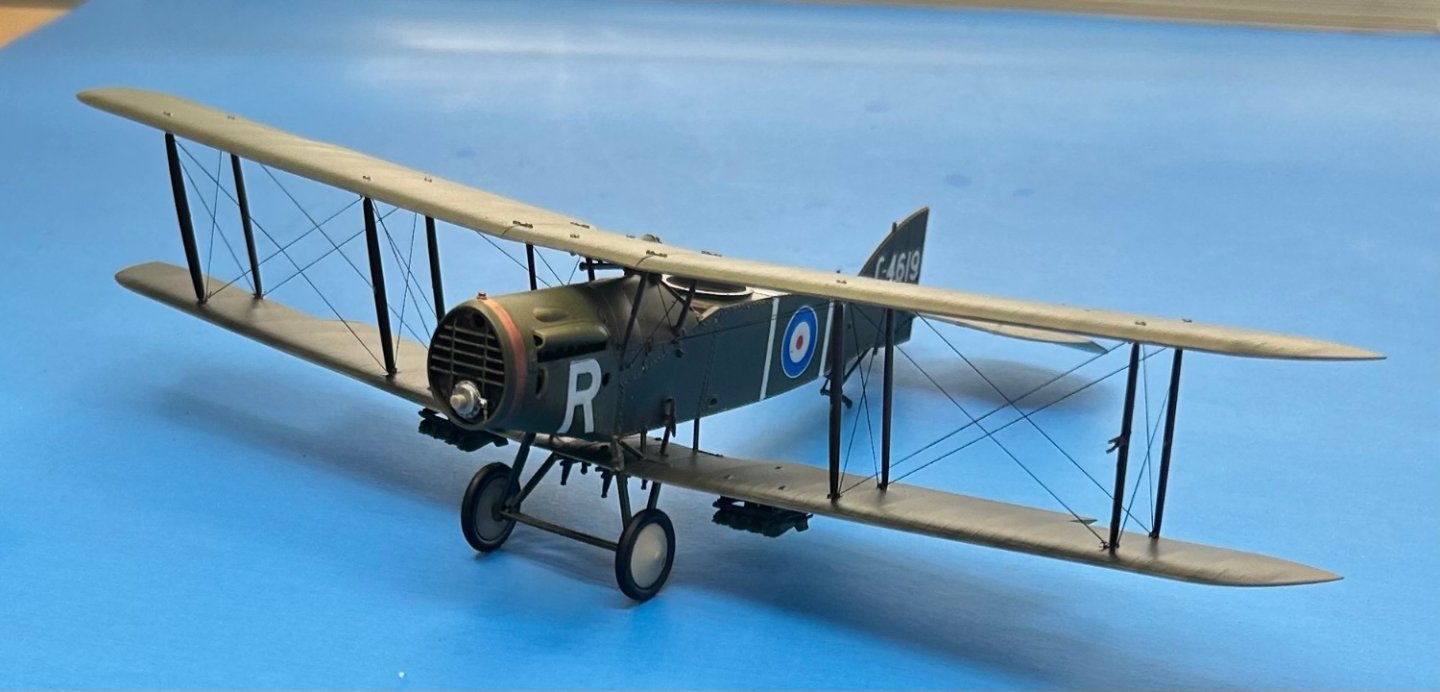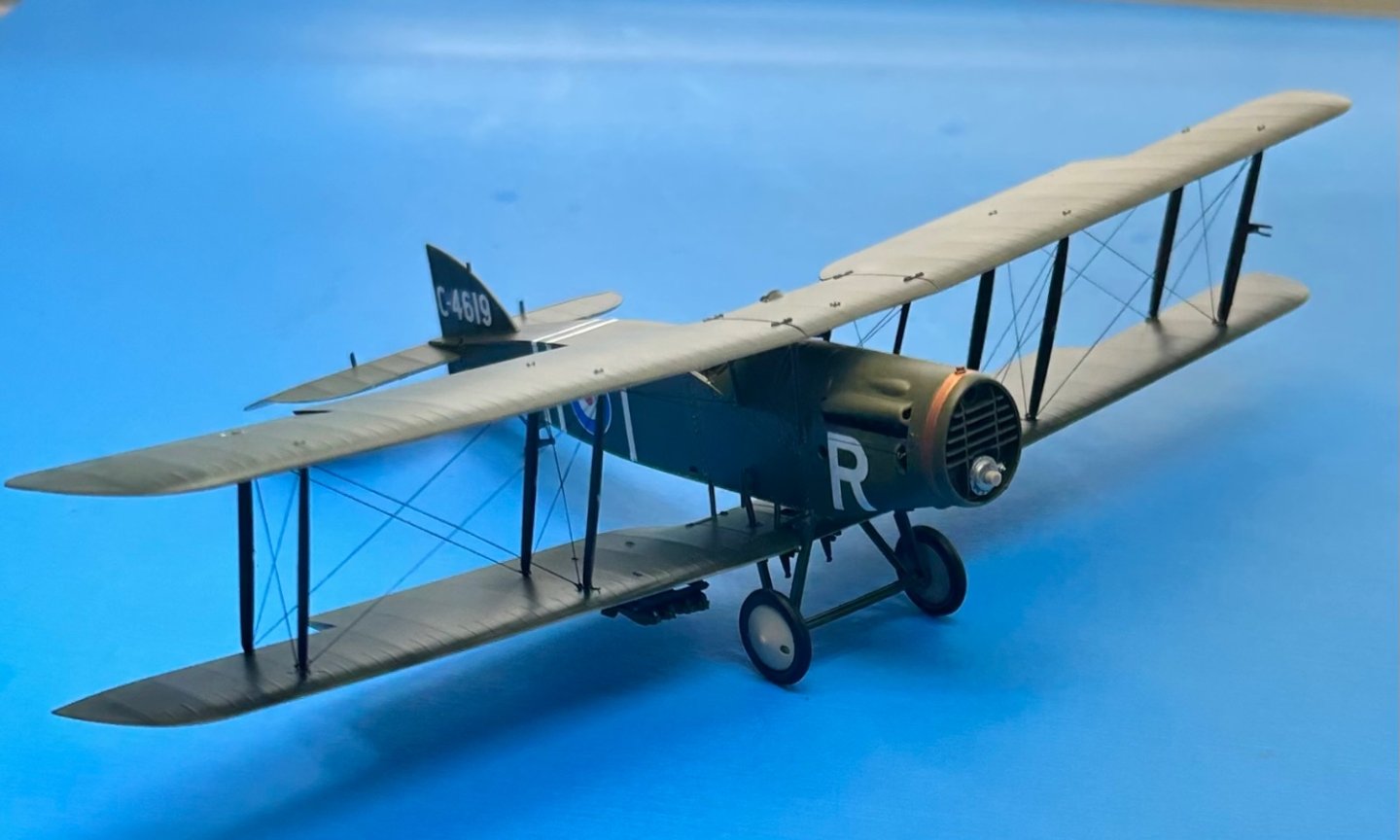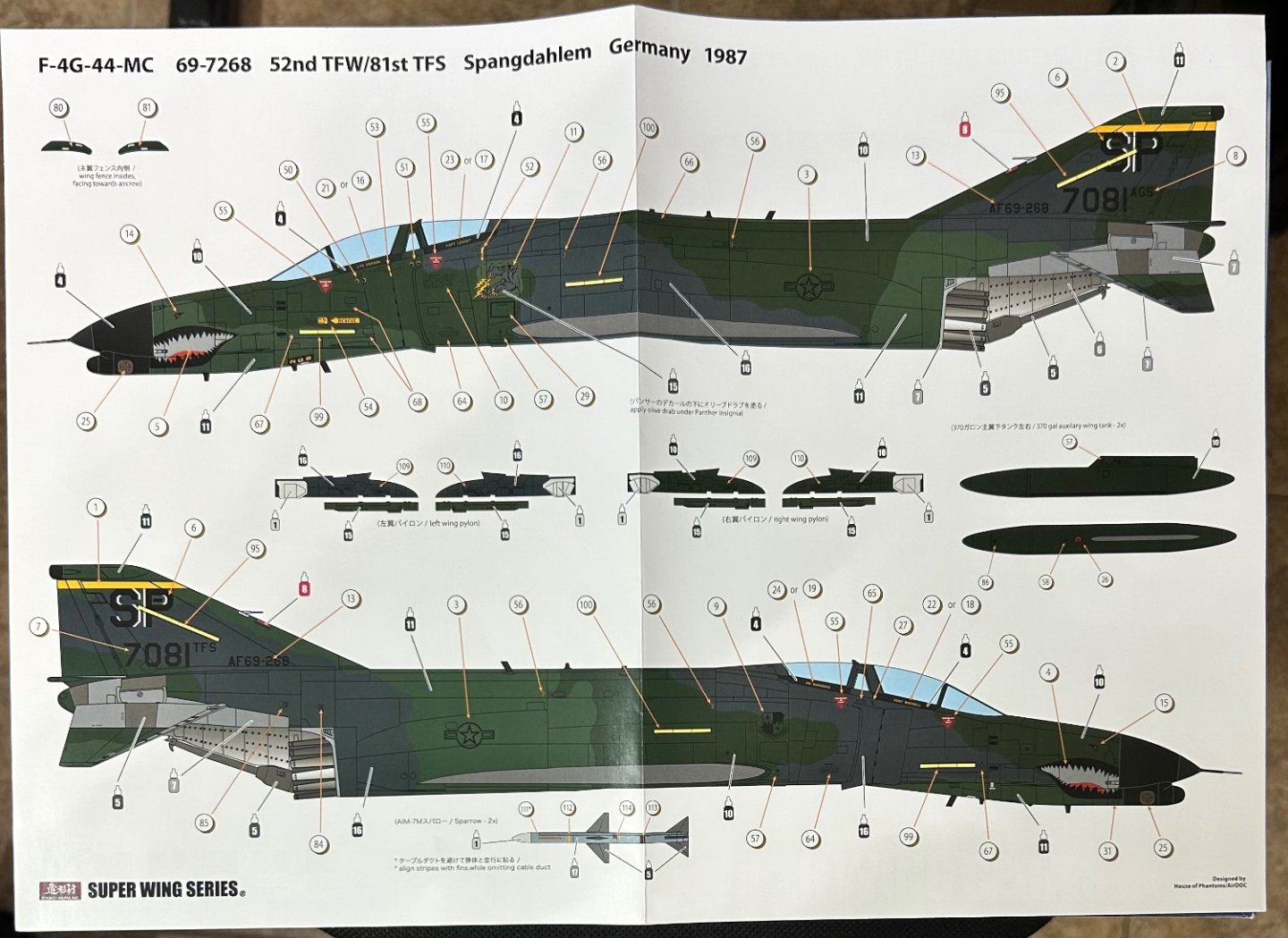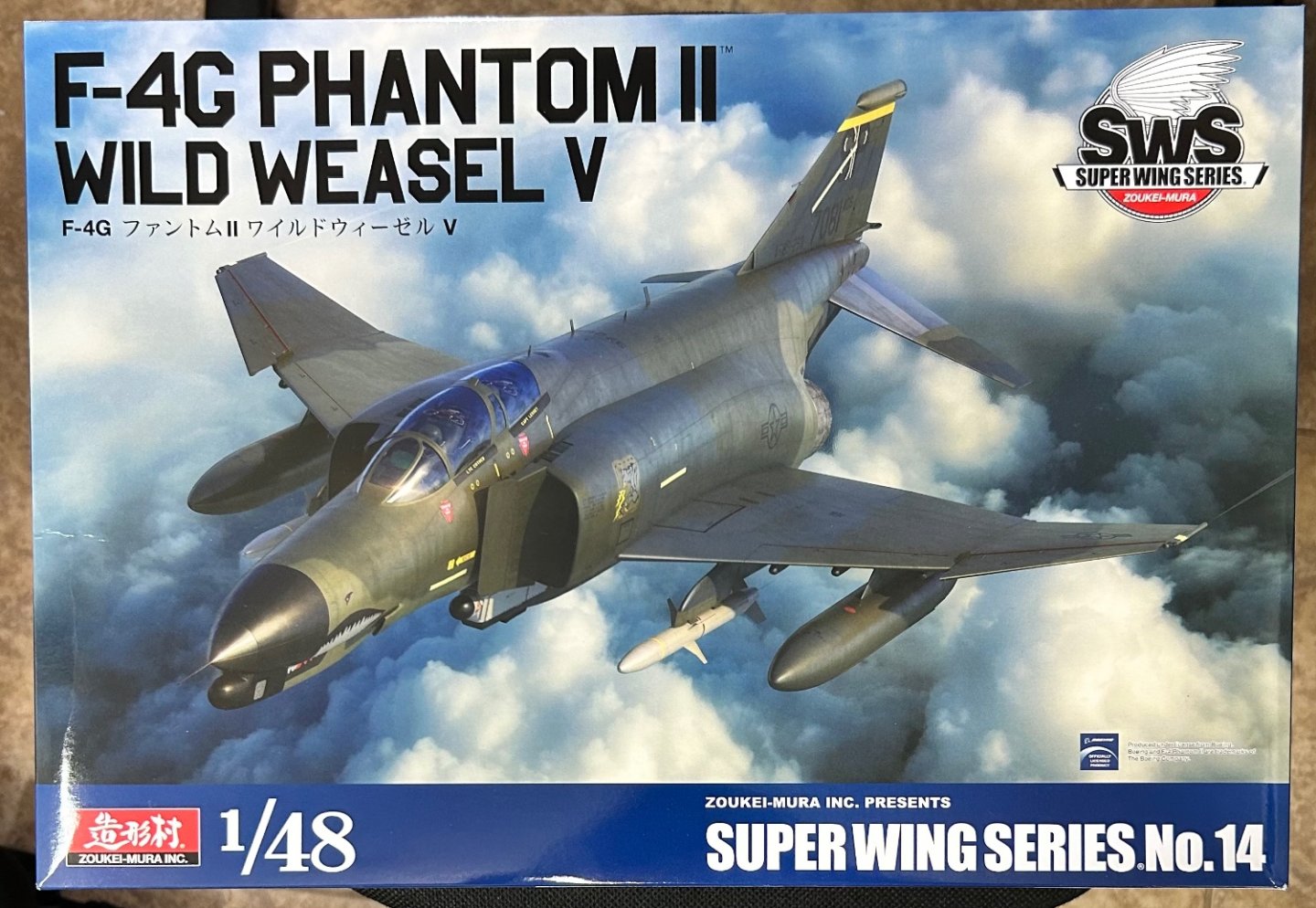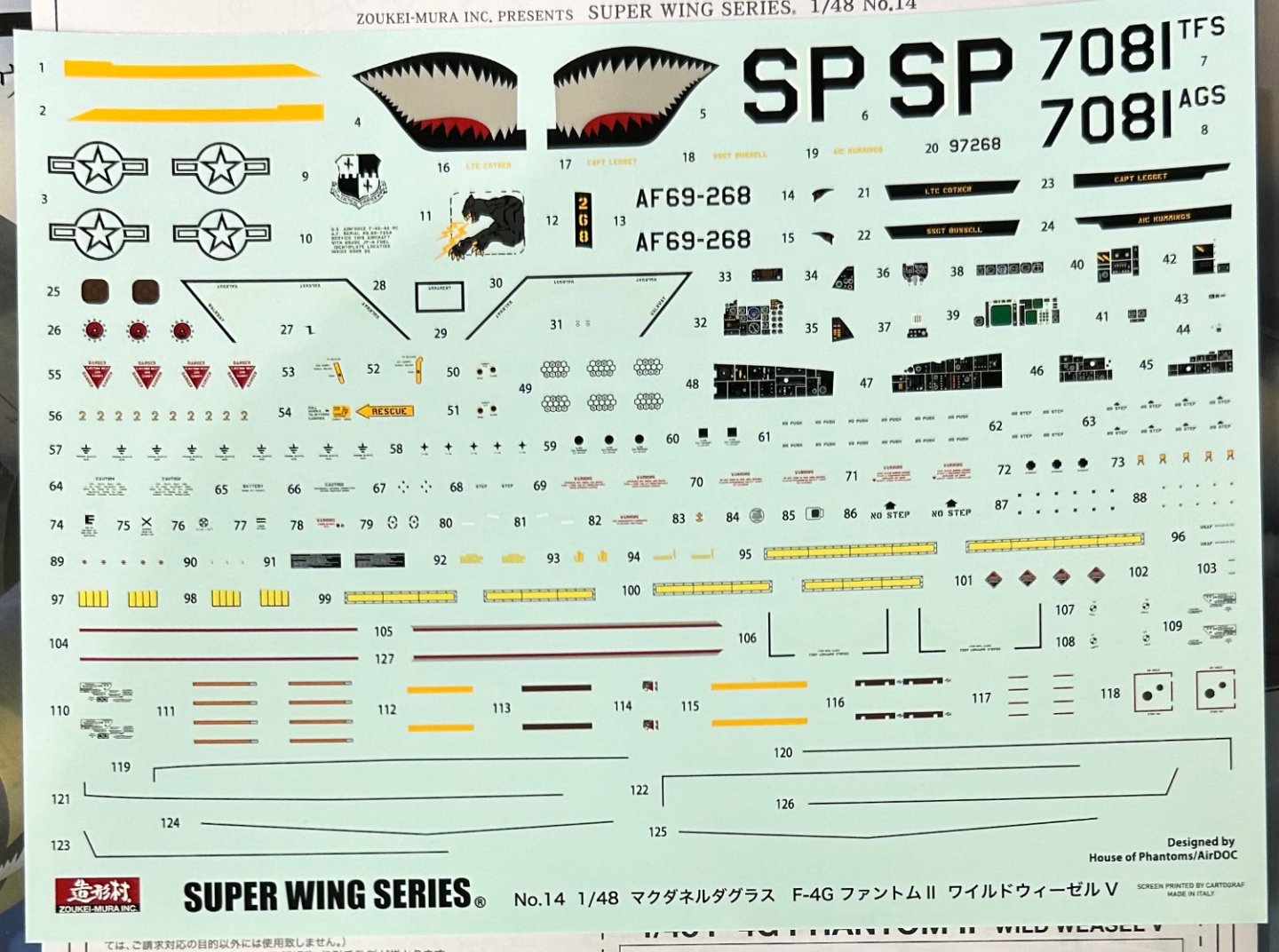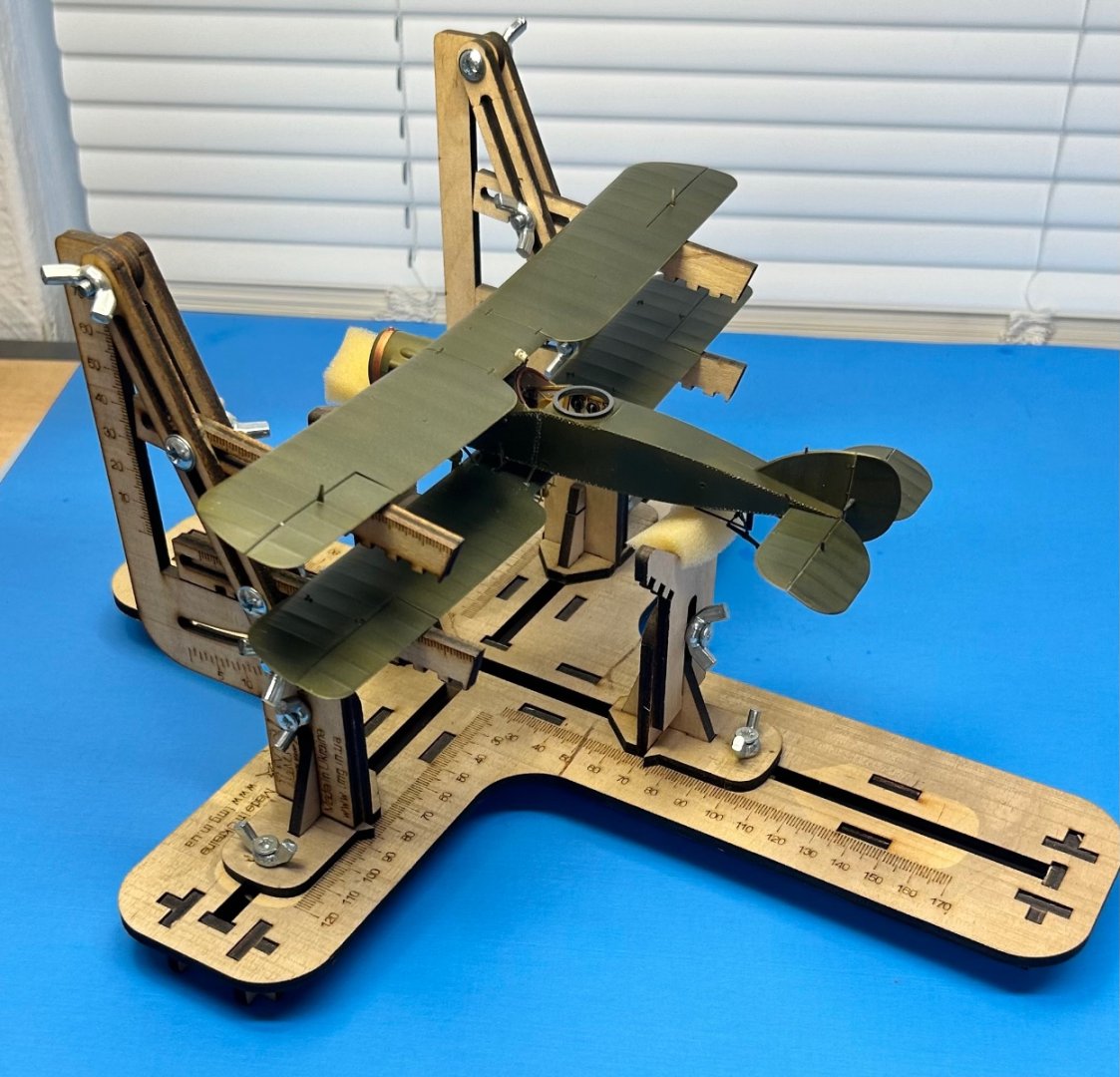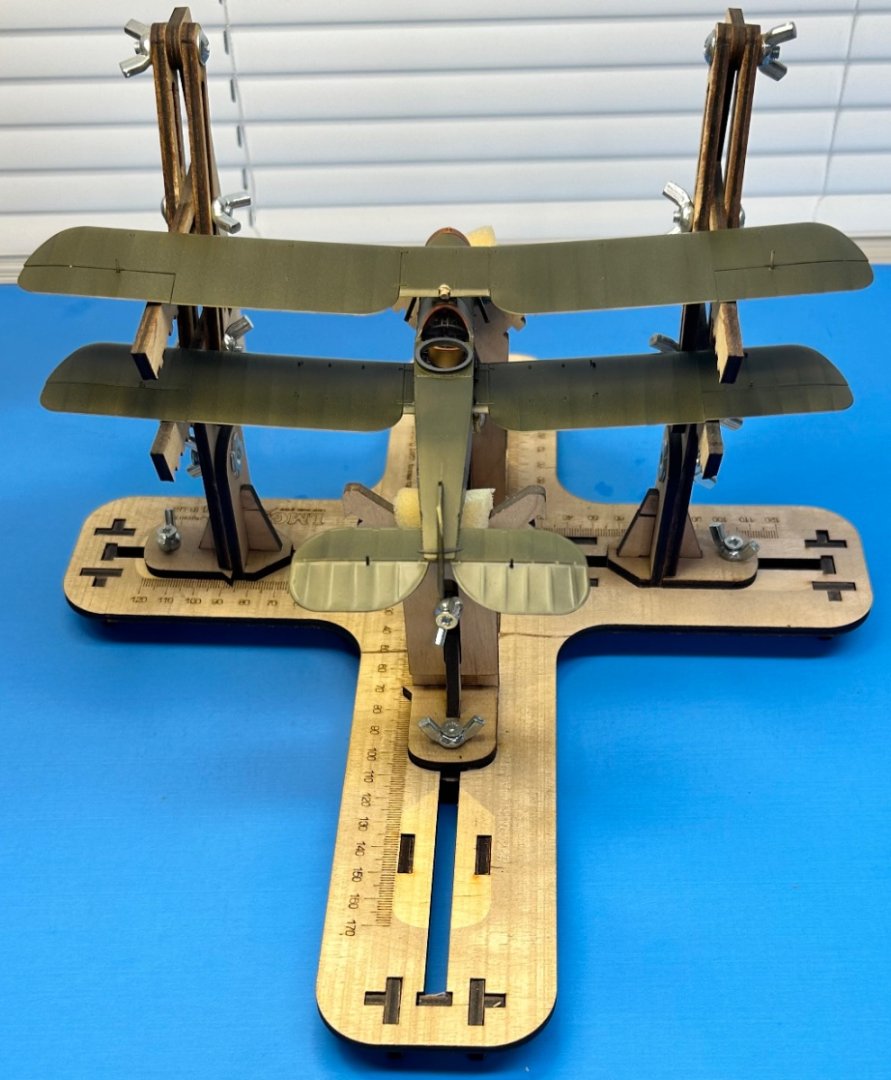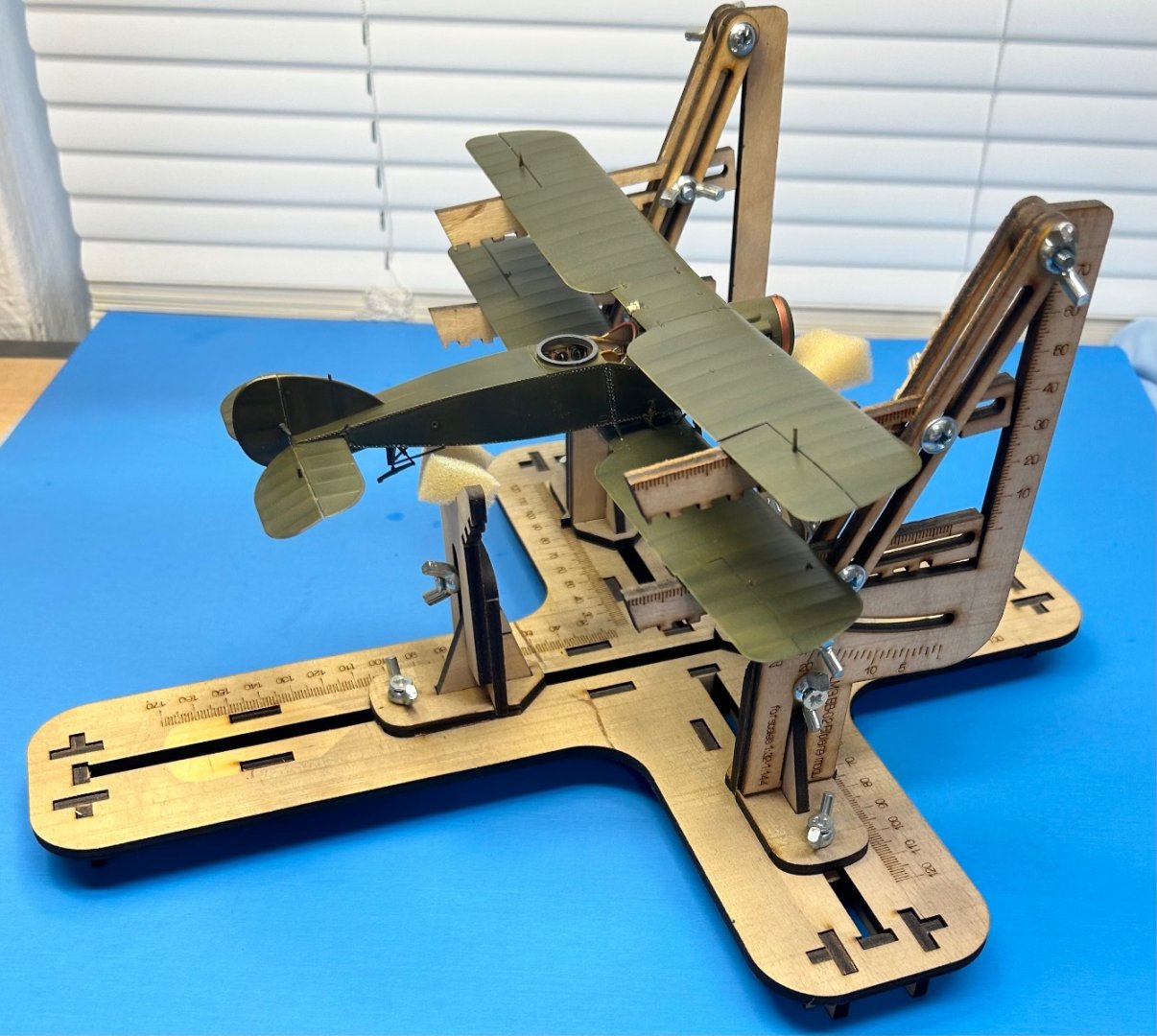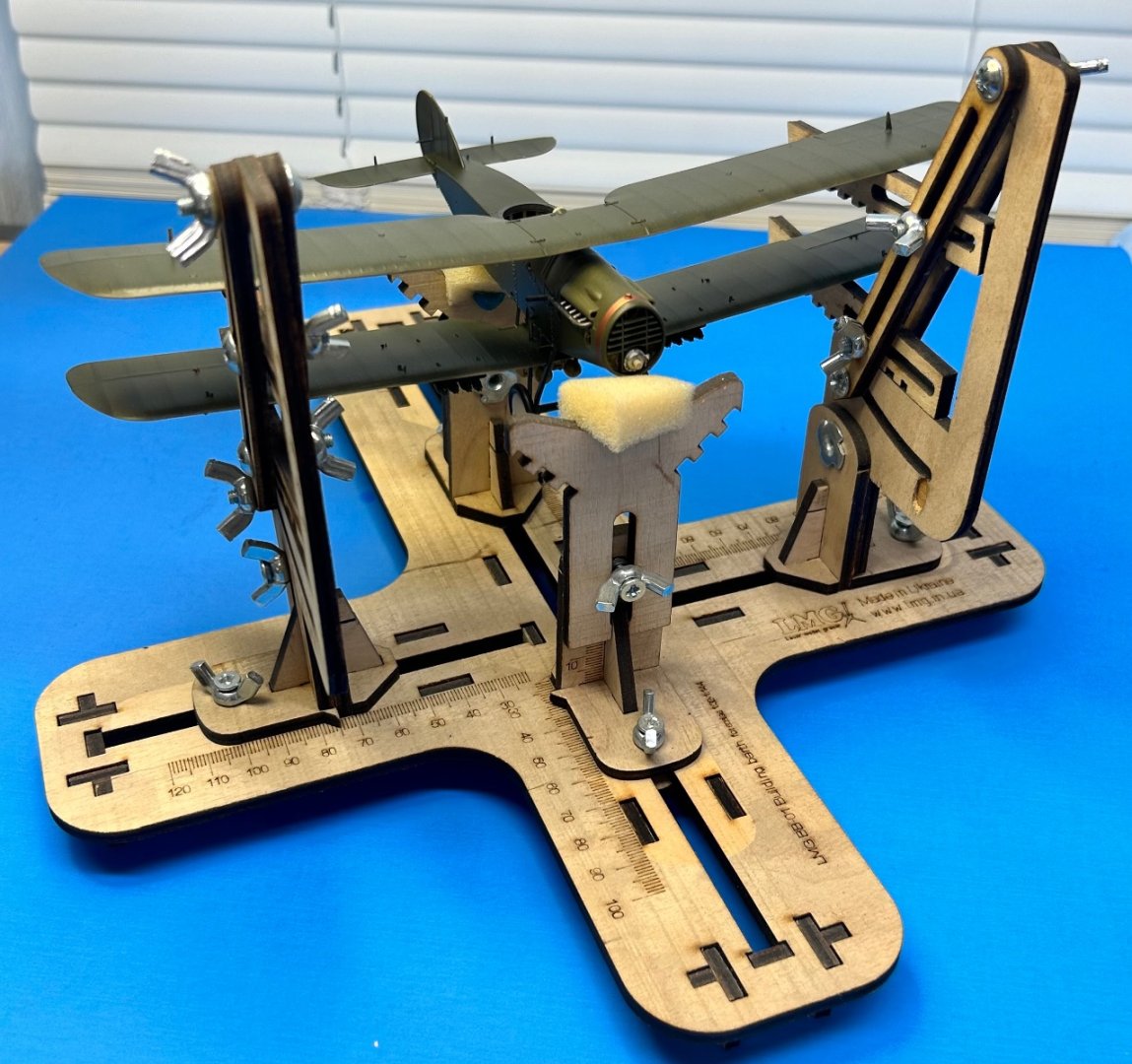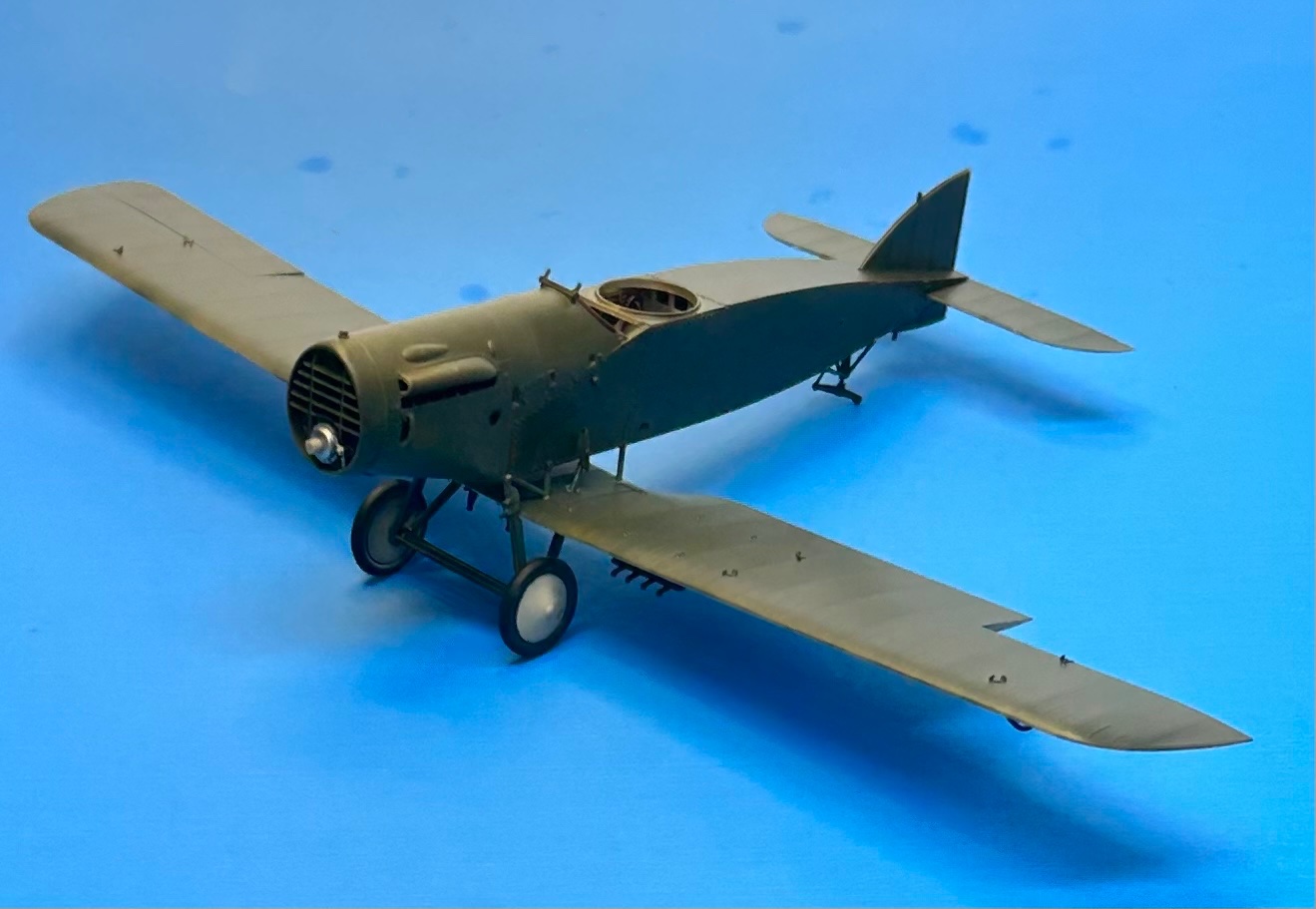-
Posts
7,737 -
Joined
-
Last visited
Content Type
Profiles
Forums
Gallery
Events
Everything posted by CDW
-

Bristol F.2B WW1 Fighter by CDW - FINISHED - Eduard - 1:48 Scale
CDW replied to CDW's topic in Non-ship/categorised builds
Did you ever hear Bishop Sheen's teaching about the atomic bomb? It stays in my mind after decades. -

Bristol F.2B WW1 Fighter by CDW - FINISHED - Eduard - 1:48 Scale
CDW replied to CDW's topic in Non-ship/categorised builds
Thanks OC. -

Bristol F.2B WW1 Fighter by CDW - FINISHED - Eduard - 1:48 Scale
CDW replied to CDW's topic in Non-ship/categorised builds
I reminded the quote of General Lee, "It is well that war is so terrible, otherwise we should grow too fond of it." -

Bristol F.2B WW1 Fighter by CDW - FINISHED - Eduard - 1:48 Scale
CDW replied to CDW's topic in Non-ship/categorised builds
I've been reading a book titled "Marked for Death". It's a historical account on the evolution of aerial warfare in World War 1. It wasn't nearly as glorious and civilized as we often see it portrayed in fictional accounts of WW1 air combat. The book portrays the Red Baron as a cold-blooded killer and somewhat demented in his outlook on life, entitled to kill, being the baron that he was. I was shocked to learn that statistically the average airman had a 70% chance of either being critically wounded or killed in combat. Sadly, the workers that built the aircraft didn't fare well either, many being poisoned by the dope that was used to protect and tighten the fabric skin used to cover the airframes. Ever wonder why two wings were used instead of one? It was simply due to the limitations of the airframe construction materials available at that period of time. Nothing else but wood and fabric were light enough to build an airframe that could sustain flight. Metallurgy of that day did not include the lightweight metallic materials we took for granted in WW2. Two wings could include box-girder construction techniques (wire bracing between the wings) that strengthened the wings to an extent that could survive the twisting effects of flight and abrupt maneuvers. -

Bristol F.2B WW1 Fighter by CDW - FINISHED - Eduard - 1:48 Scale
CDW replied to CDW's topic in Non-ship/categorised builds
Got to be careful not to paint myself into a corner. Certain details on this model such as the control surface cables will easily be destroyed during necessary handling of the model, so sequence of construction is an issue. -

Bristol F.2B WW1 Fighter by CDW - FINISHED - Eduard - 1:48 Scale
CDW replied to CDW's topic in Non-ship/categorised builds
My first dog came to me as a free pup when I was eight years old. He was a cross between a German Shepard and Collie. He was a great dog that lived until I was well into my twenties. Never sick until the end. And yes, puppies are not free anymore, generally speaking. On the other hand, if they are properly cared for, the owner will have an investment in vet expense that needs to be covered. -
Richmond No problem at all. Glad to hear from you again. I used Vallejo white-gray for that.
- 467 replies
-
- mikasa
- wave models
-
(and 1 more)
Tagged with:
-

Bristol F.2B WW1 Fighter by CDW - FINISHED - Eduard - 1:48 Scale
CDW replied to CDW's topic in Non-ship/categorised builds
He's a Cavapoo, cross between a King Charles Spaniel and Toy Poodle. Until today, didn't know there was such a thing. -

Bristol F.2B WW1 Fighter by CDW - FINISHED - Eduard - 1:48 Scale
CDW replied to CDW's topic in Non-ship/categorised builds
-

Bristol F.2B WW1 Fighter by CDW - FINISHED - Eduard - 1:48 Scale
CDW replied to CDW's topic in Non-ship/categorised builds
Yes, the top wing sits forward of the bottom, so it has a tendency to slide forward while under any pressure to bind the top wing to the bottom. Styrofoam could work well to maintain the correct distance between the wings. With this particular model, the cabane struts mount individually to little slots in the fuselage. Those need to first be cemented to the fuselage at the correct angles and at the right height before the two wings can be joined. Cementing them in place at the correct angles and height is tricky. If they are off at all, nothing else will fit. -

Bristol F.2B WW1 Fighter by CDW - FINISHED - Eduard - 1:48 Scale
CDW replied to CDW's topic in Non-ship/categorised builds
Rigging between the top and bottom wings is attached. Now to reattach all the parts I broke off while doing the rigging. I didn’t say anything about it at the time, but one of our little dogs passed away three weeks ago after suffering with diabetes the past seven years. It finally got the best of him, but he lived thirteen good years and was loved by all, particularly our youngest daughter. Today we bought another little buddy to bring home. His name is Topaz. He will be eight weeks old on November 20 when we bring him home. Our daughter is thrilled. -

Bristol F.2B WW1 Fighter by CDW - FINISHED - Eduard - 1:48 Scale
CDW replied to CDW's topic in Non-ship/categorised builds
You got that right -

Bristol F.2B WW1 Fighter by CDW - FINISHED - Eduard - 1:48 Scale
CDW replied to CDW's topic in Non-ship/categorised builds
I used my vast storehouse of vile language while attaching the top and bottom wings. Fiddly doesn’t begin to describe the nature of it, though I do believe there is a certain benefit from going through the ordeal. Patience and endurance maybe? -

F-4G Phantom II Wild Weasel V by CDW - Zoukei Mura - 1:48 scale
CDW replied to CDW's topic in Non-ship/categorised builds
There’s a whole ZM family of F-4’s out. I wanted the F-4E, but it’s on back order for now. -

Bristol F.2B WW1 Fighter by CDW - FINISHED - Eduard - 1:48 Scale
CDW replied to CDW's topic in Non-ship/categorised builds
Yes, top and bottom wings are supported, and each wing incidence angle can be set separately. I rig the top wing before gluing the struts in place. Once the struts are in place with glue dried, I will attach the rigging from the top wing to the bottom wing. -

Bristol F.2B WW1 Fighter by CDW - FINISHED - Eduard - 1:48 Scale
CDW replied to CDW's topic in Non-ship/categorised builds
It didn’t come with instructions so finding the best way to set it up is a bit of trial and error. What I want it to do is hold everything in position at the correct angles and spacing to allow the wing struts to be glued into correct position. The way I pictured the device with the model in place is not ideal for this task. It needs to be in a nose down attitude to best achieve this ( in my opinion). The device is capable of this but it takes patience to set it up the first time. If you notice, the upper wing of many biplanes sit forward of the lower wing. It helps a lot to know this angle. The device has a graduated scale in degrees for this purpose. It also allows for setting the correct wing incident angles. -

Bristol F.2B WW1 Fighter by CDW - FINISHED - Eduard - 1:48 Scale
CDW replied to CDW's topic in Non-ship/categorised builds
Thanks Rob. Just ordered some from Amazon. For any that might be interested, check out and bookmark a great WW1 model aircraft site: ww1aircraftmodels.com -

Bristol F.2B WW1 Fighter by CDW - FINISHED - Eduard - 1:48 Scale
CDW replied to CDW's topic in Non-ship/categorised builds
Where did you source the Pyrn thread? I read about it but never used it. My experience with photo etch is limited to a Tamiya Swordfish. It sagged. -

Bristol F.2B WW1 Fighter by CDW - FINISHED - Eduard - 1:48 Scale
CDW replied to CDW's topic in Non-ship/categorised builds
Thanks Rob. Hope it doesn’t disappoint too much but I won’t be doing flat rigging with this model. Wasn’t prepared to source the materials needed which on first thought would need to be photo etch. Could possibly do it by repurposing some small scale ship railing but in this case will cheat and use round rigging instead. -

Bristol F.2B WW1 Fighter by CDW - FINISHED - Eduard - 1:48 Scale
CDW replied to CDW's topic in Non-ship/categorised builds
I will use this contraption to align the wings and glue the struts in place. It’s not aligned yet, just posed for a “before” photo. The “after” photo will come later. -

Bristol F.2B WW1 Fighter by CDW - FINISHED - Eduard - 1:48 Scale
CDW replied to CDW's topic in Non-ship/categorised builds
-

Bristol F.2B WW1 Fighter by CDW - FINISHED - Eduard - 1:48 Scale
CDW replied to CDW's topic in Non-ship/categorised builds
About us
Modelshipworld - Advancing Ship Modeling through Research
SSL Secured
Your security is important for us so this Website is SSL-Secured
NRG Mailing Address
Nautical Research Guild
237 South Lincoln Street
Westmont IL, 60559-1917
Model Ship World ® and the MSW logo are Registered Trademarks, and belong to the Nautical Research Guild (United States Patent and Trademark Office: No. 6,929,264 & No. 6,929,274, registered Dec. 20, 2022)
Helpful Links
About the NRG
If you enjoy building ship models that are historically accurate as well as beautiful, then The Nautical Research Guild (NRG) is just right for you.
The Guild is a non-profit educational organization whose mission is to “Advance Ship Modeling Through Research”. We provide support to our members in their efforts to raise the quality of their model ships.
The Nautical Research Guild has published our world-renowned quarterly magazine, The Nautical Research Journal, since 1955. The pages of the Journal are full of articles by accomplished ship modelers who show you how they create those exquisite details on their models, and by maritime historians who show you the correct details to build. The Journal is available in both print and digital editions. Go to the NRG web site (www.thenrg.org) to download a complimentary digital copy of the Journal. The NRG also publishes plan sets, books and compilations of back issues of the Journal and the former Ships in Scale and Model Ship Builder magazines.

.jpg.7e80607770d9078b2f0b470e8c9c33ac.jpg)


